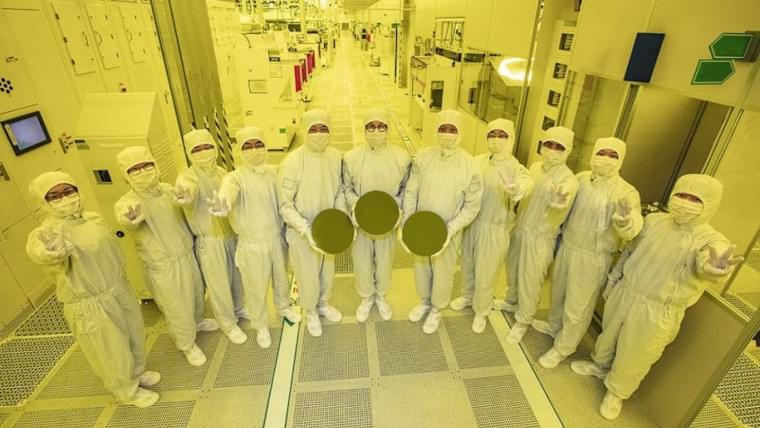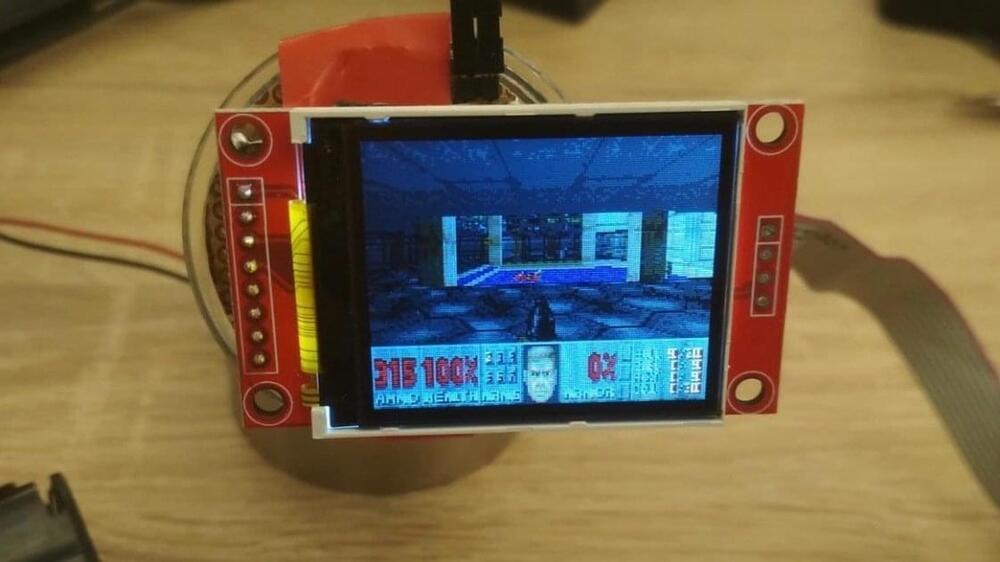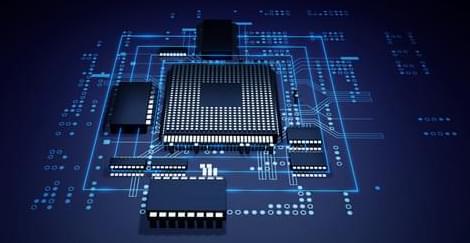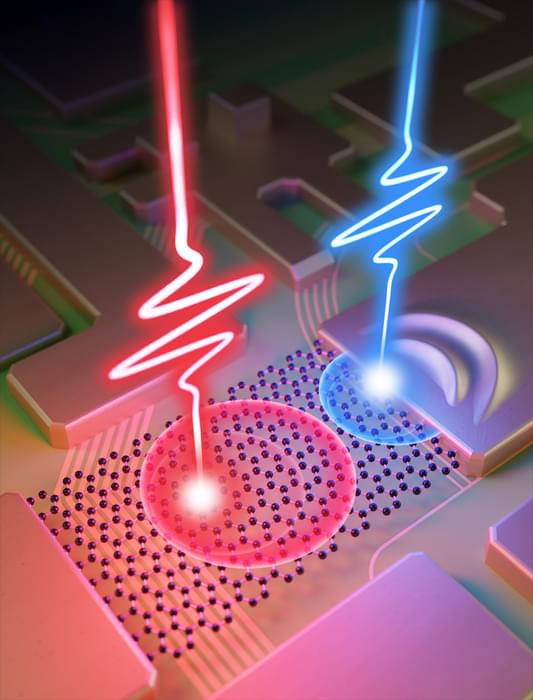Samsung has begun the production of 3 nm chips. They deliver improved performance and power usage compared to 5 nm chips. Samsung is also planning even better second-gen 3 nm hardware.



Blockchain is a digital technology that allows a secure and decentralized record of transactions that is increasingly used for everything from cryptocurrencies to artwork. But Yale researchers have found a new use for blockchain: they’ve leveraged the technology to give individuals control of their own genomes.
Their findings are published June 29 in the journal Genome Biology.
“Our primary goal is to give ownership of genomic data back to the individual,” said senior author Mark Gerstein, the Albert L. Williams Professor of Biomedical Informatics and professor of molecular biophysics and biochemistry, of computer science, and of statistics and data science.
LeviPrint is a system that uses acoustic manipulation for assembling objects without physical contact. It generates acoustic fields that trap small particles, glue droplets and elongated stick-like elements that can be manipulated and reoriented as they are levitated. It is a fully functional system for manufacturing 3D structures using contactless manipulation.
It was developed by researchers from the UPNA/NUP-Public University of Navarre Asier Marzo and Iñigo Ezcurdia, who together with Rafael Morales (Ultraleap Ltd, UK) and Marco Andrade (University of São Paulo, Brazil) are authors of the paper “LeviPrint: Contactless Fabrication using Full Acoustic Trapping of Elongated Parts.”
This research is due to be presented in August in Vancouver (Canada) at SIGGRAPH, a conference on computer graphics and interactive techniques where companies such as Nvidia, Disney Research and Facebook Reality Labs present their work.

Intel Labs has announced that it has made a noteworthy advancement in the area of integrated photonics research, which it bills as the “next frontier” in expanding communications bandwidth between compute silicon in data centers and across networks. The company believes this advancement holds the promise of a future input/output (I/O) interface with improved energy efficiency and bandwidth, and a longer reach.
The disclosure explains the possibility to obtain well-matched output power in conjunction with uniform and densely spaced wavelengths, according to Haisheng Rong, Senior Principal Engineer at Intel Labs. Rong also points out that this can be done by utilizing existing manufacturing and process techniques in Intel fabs, and therefore ensures a path to volume production of the “next-generation co-packaged optics and optical compute interconnect at scale.”
Intel states that this breakthrough results in industry-leading advancements in multiwavelength integrated optics. It includes the demonstration of an eight-wavelength distributed feedback (DFB) laser array that is fully integrated on a silicon wafer and provides exceptional output power uniformity of +/-0.25 decibel (db), as well as wavelength spacing uniformity of +/-6.5% that go beyond industry specifications.

If you need the hardware.
A separate study used metasurfaces as a telephone of sorts to help two people text simple messages, all without lifting a finger.
Direct brain-to-brain communication isn’t new. Previous studies using non-invasive setups had participants playing 20 questions with their brain waves. Another study built a BrainNet for three volunteers, allowing them to play a Tetris-like game using brainwaves alone. The conduit for those mindmelds relied on cables and the internet. One new study asked if metasurfaces could do the same.
Led by Dr. Tie Jun Cui at the Institute of Electromagnetic Space, Southeast University in China, the study linked a well-known brainwave signal, P300, to the properties of a metasurface. Their setup, electromagnetic brain-computer-metasurface (EBCM), used brainwaves to control a particular type of metasurface known as an information metasurface, which can code 0s and 1s like an electronic circuit board.
Neurograins might be the future of implantable Brain Computer Interfaces due to their advantages in terms of abilities and safety in terms of implantation. Due to being the smallest Microchips ever made, in addition to being very powerful, they can make very high resolution recordings of brain activity and even stimulate areas in the brain for medical treatments for people suffering from brain disorders.
The field of neuroscience is developing at a rapid pace, which constantly improves on our BCI Technology and enabling more and more treatments and applications for Brain Computer Interface. It’s clear that this is very advanced future technology and who knows, maybe these new Neurograin Brain Computer Interfaces may play a part in it. Or maybe Elon Musk’s Neuralink’s approach will win in the end. People willingly microchipping their brains will be more common in the future.
–
If you enjoyed this video, please consider rating this video and subscribing to our channel for more frequent uploads. Thank you! smile
–
TIMESTAMPS:
00:00 The smallest Chips ever made?
01:48 How is it different?
02:47 How this Brain Computer Interface works.
03:51 What can this BCI do?
05:46 The Future of Brain Computer Interfaces.
08:30 Last Words.
–
#Neurograins #bci #neuralink

A $14.95 smart lamp from Ikea apparently has enough computing power to run the classic PC game Doom.
A software engineer named Nicola Wrachien removed the smart lamp’s computer chip and used it to build a miniaturized Doom gaming system. Over the weekend, he uploaded a video to YouTube, showing his creation in action.
The system runs a downsized version of Doom that requires less RAM. The chip from the Ikea lamp has enough processing power to play the game at 35 frames per second over a cheap 160-by-128-pixel display.

Researchers have identified the best silicon and silicon dioxide materials for the next generation of transistors, which are expected to be just a nanometer long.
North Carolina State University researchers found they could filter carbon dioxide from air and gas mixtures at promising rates using a proposed new textile-based filter that combines cotton fabric and an enzyme called carbonic anhydrase—one of nature’s tools for speeding chemical reactions.

The first logic gate to operate at femtosecond timescales could help usher in an era of information processing at petahertz frequencies – a million times faster than today’s gigahertz-scale computers. The new gate, developed by researchers at the University of Rochester in the US and the Friedrich-Alexander-Universität Erlangen-Nürnberg (FAU) in Germany, is an application of lightwave electronics – essentially, shuffling electrons around with light fields – and harnesses both real and virtual charge carriers.
In lightwave electronics, scientists use laser light to guide the motion of electrons in matter, then exploit this control to create electronic circuit elements. “Since light oscillates so fast (roughly a few hundred million times per second), using light could speed up electronics by a factor of roughly 10 000 as compared to computer chips,” says Tobias Boolakee, a laser physicist in Peter Hommelhoff’s group at the FAU and the first author of a study in Nature on the new gate. “With our present work, we have been able propose the idea for a first light field-driven logic gate (the fundamental building block for any computer architecture) and also demonstrate its working principle experimentally.”
In the work, Boolakee and colleagues prepared tiny graphene-based wires connected to two gold electrodes and illuminated them with a laser pulse lasting a few tens of femtoseconds (10-15 s). This laser pulse excites, or sets in motion, the electrons in graphene and causes them to propagate in a particular direction – so generating a net electrical current.

Whether or not a solid can emit light, for instance as a light-emitting diode (LED), depends on the energy levels of the electrons in its crystalline lattice. An international team of researchers led by University of Oldenburg physicists Dr. Hangyong Shan and Prof. Dr. Christian Schneider has succeeded in manipulating the energy-levels in an ultra-thin sample of the semiconductor tungsten diselenide in such a way that this material, which normally has a low luminescence yield, began to glow. The team has now published an article on its research in the science journal Nature Communications.
According to the researchers, their findings constitute a first step towards controlling the properties of matter through light fields. “The idea has been discussed for years, but had not yet been convincingly implemented,” said Schneider. The light effect could be used to optimize the optical properties of semiconductors and thus contribute to the development of innovative LEDs, solar cells, optical components and other applications. In particular the optical properties of organic semiconductors—plastics with semiconducting properties that are used in flexible displays and solar cells or as sensors in textiles—could be enhanced in this way.
Tungsten diselenide belongs to an unusual class of semiconductors consisting of a transition metal and one of the three elements sulfur, selenium or tellurium. For their experiments the researchers used a sample that consisted of a single crystalline layer of tungsten and selenium atoms with a sandwich-like structure. In physics, such materials, which are only a few atoms thick, are also known as two-dimensional (2D) materials. They often have unusual properties because the charge carriers they contain behave in a completely different manner to those in thicker solids and are sometimes referred to as “quantum materials.”